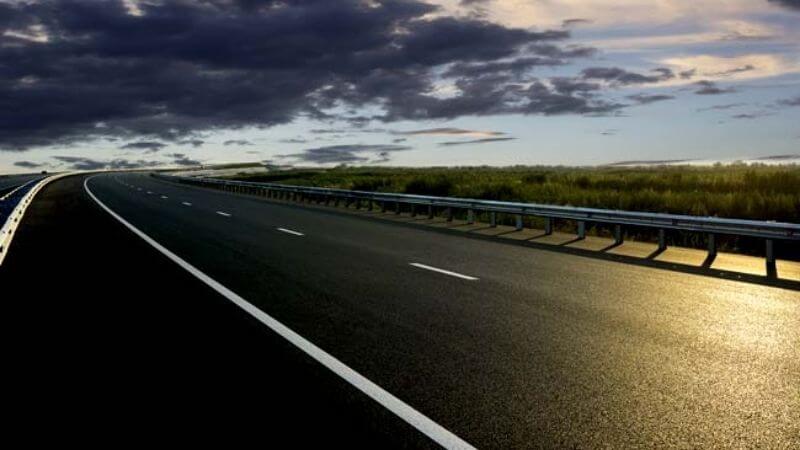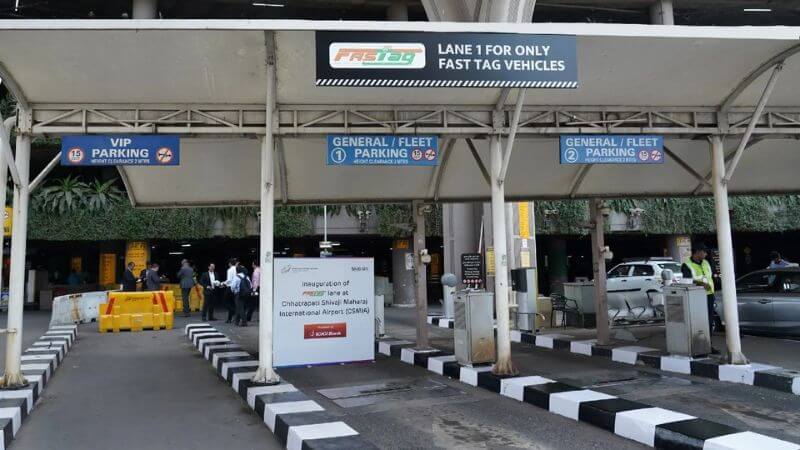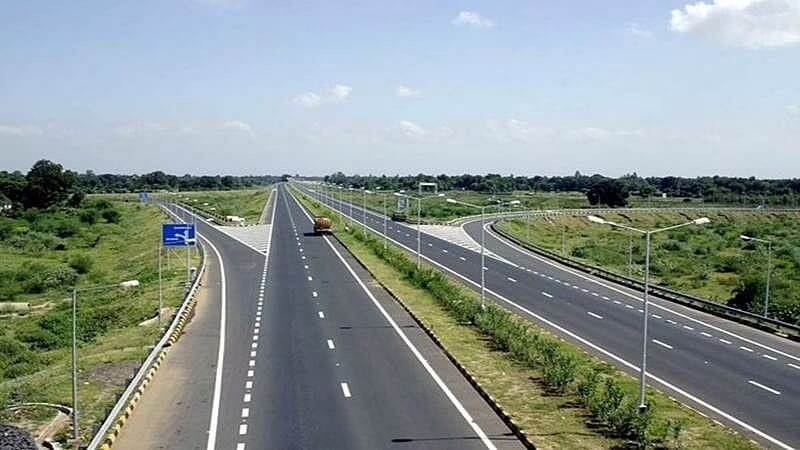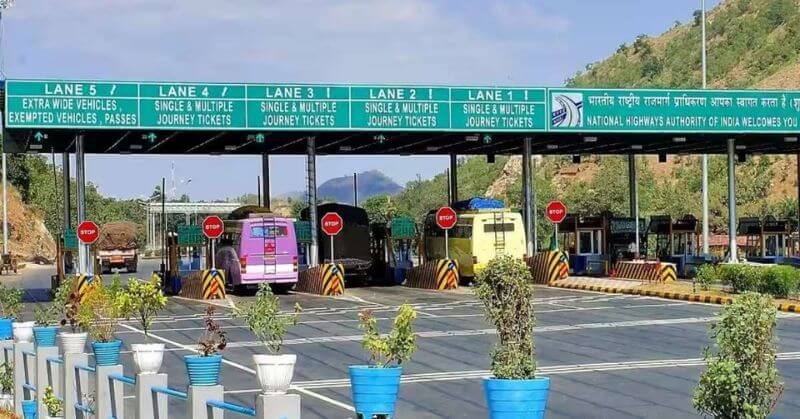On Tuesday, the Ministry of Road, Transport, and Highways (MoRTH) issued a notice allowing private vehicle owners to travel 20 km on highways and expressways without any toll fee. Free toll collection is implemented based on the Global Navigation Satellite System (GNSS). GNSS will replace the FASTag system.
National Highways Fee Rules?

The national highway fee is amended according to the Determination of Rates and Collection Rules, 2008. This provision allows a toll to be charged according to the actual distance covered if it exceeds 20 km. The main objective of this provision is to reduce blockage at highway toll plazas. The rule is also revised to incorporate electronic toll collection methods through satellite-based systems. As per the notification issued by MoRTH,
“A driver, owner, or person in charge of a mechanical vehicle other than a national permit vehicle who makes use of the same section of the national highway, permanent bridge, bypass of tunnel, as the case may be, shall be levied a zero user fee up to twenty kilometers of journey in each direction in a day under the Global Navigation Satellite System-based user fee collection system, and if the distance traveled is more than twenty kilometers, the fee will be charged for the actual distance traveled.”
Global Navigation Satellite System (GNSS)

The existing system has a fixed amount even if the user travels on the part of the toll road. GNSS will charge a toll based on the distance covered. This will allow the users to pay only for the distance they have traveled. The vehicle’s movement will be tracked through a satellite-based system. The charges will be calculated with the help of an on-board unit (OBU) installed in the vehicles.
OBU will be non-transferrable and securely fitted in the vehicle of the user. If the vehicles don’t have GNSS when entering the GNSS-exclusive lanes, then they will have to pay double the amount as a penalty. Advance reading, enforcement, and identification equipment are included in GNSS. This will help to get a free flow pass for the valid vehicles.
CCTV cameras installed will keep them updated about each vehicle passing by. According to MoRTH, more than 98% of user fee payments are made through FASTag at Toll Plazas.
In July, according to reports from TNIE, “the first phase, GNSS-based tolling for commercial vehicles and private vehicles, will be included subsequently.”
A Hybrid Model
In this, Radio Frequency Identification (RFID)-based FASTag, as well as GNSS-enabled toll collection, shall continue in tandem until the proposed arrangement is commonly adopted and seamlessly done. Conclusively, all lanes at the fee plaza shall be converted into GNSS lanes.
“Separate lane can be earmarked for Global Navigation Satellite System On-Board Unit-fitted vehicles, and in case a vehicle enters such lane without a valid, functional Global Navigation Satellite System On-Board Unit, it shall pay a fee equivalent to two times the user fee applicable at the fee plaza.”
National Highways Authority Of India (NHAI)

Indian Highways Management Company Limited (IHMCL) is a company promoted by NHAI. On July 2, it issues a global tender for the construction of GNSS-based toll collection. Yet, the tender has not been finalized.
One pilot study regarding the GNSS-based user fee collection system has been conducted on the Bengaluru-Mysore section of NH-275 in Karnataka and the Panipat-Hisar section of NH-709 in Haryana. The government is hoping that this change will help to plug the gaps and identify the toll defaulters.
Challenges
While India is indeed capable of embracing digital technologies, major infrastructure upgrades will be required to move to the transition of the GPS-based toll system.
India has approximately 6.67 million km of road networks. It is considered to be the second largest in the world. Meanwhile, the total length of operational toll roads in the country increased from 25,996 km in FY19 to 45,428 km as of November-end of FY24. The toll length stood at 29,666 km in 2019-20, 34,071 km in 2020-21, and 42,595 km in 2022-23.
Furthermore, replacing the existing FASTag infrastructure with the new system may lead to increased toll charges for the drivers.
Road Tragedies And Accidents In India
On September 10, the 64th annual conference was held in Delhi. Nitin Gadkari (Union Road Transport and Highways Minister) discussed with the stakeholders how they could reduce road accidents in India.
During SIAM’s annual event, Gadkari informed Original Equipment Manufacturers (OEMs) that “there are nearly 53 accidents and 18 deaths every hour in the country. Just imagine 45% of the accidents because of two-wheelers, 20% in pedestrians.”
The ‘India Status Report on Road Safety 2024’ prepared by the TRIP Center at IIT Delhi is coming out with a comprehensive analysis of road safety in the country. For analysis, they used data from FIRs of six states and audits of compliance of states with Supreme Court directives on road safety governance.
According to reports by The Hindu, in 2021, reports claimed that road traffic injuries were the 13th leading reason of death in India. It was considered the 12th leading cause of health loss.
Road traffic injuries ranked in the top 10 in these six states: Haryana, Jammu and Kashmir, Ladakh, Punjab, Rajasthan, Uttarakhand, and Uttar Pradesh.
Highest Death Rates Per 1,000
- Tamil Nadu at 21.9
- Telangana at 19.2
- Chhattisgarh at 17.6
Opposite to that, West Bengal and Bihar had the lowest rates ever, at 5.9 per 1,000 in 2021. Nearly half of all the traffic tragedy in India is from these six states:
- Uttar Pradesh
- Maharashtra
- Madhya Pradesh
- Karnataka
- Rajasthan
- Tamil Nadu
The report claimed that most states are victims of traffic injuries because the citizens do not follow basic safety measures such as traffic calming, markings, and signals.
India’s Position In Global Road Governance
The reports compare India with developed countries such as Sweden and other Scandinavian countries. In 1990, according to the statistics, 40% of Indians were more likely to die in road accidents than people in these countries. Till the time we entered 2021. This figure increased to 600%, which indicated the solid rise in road tragedies.
The majority of road deaths are likely to happen with two-wheeler riders, motorcyclists, and cyclists. The report questioned whether advanced safety features with better-equipped vehicles are the solution.
Follow Us: Facebook | Instagram | X |
Youtube | Pinterest | Google News |
Entertales is on YouTube; click here to subscribe for the latest videos and updates.














